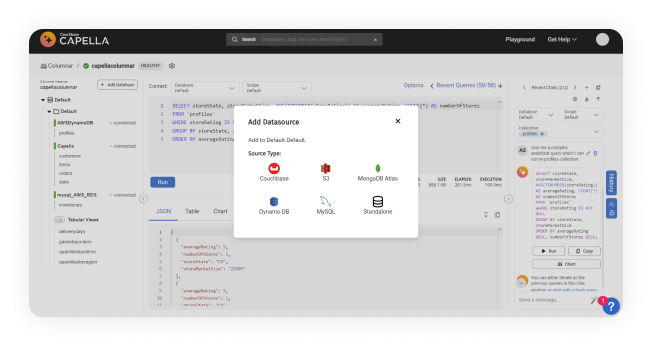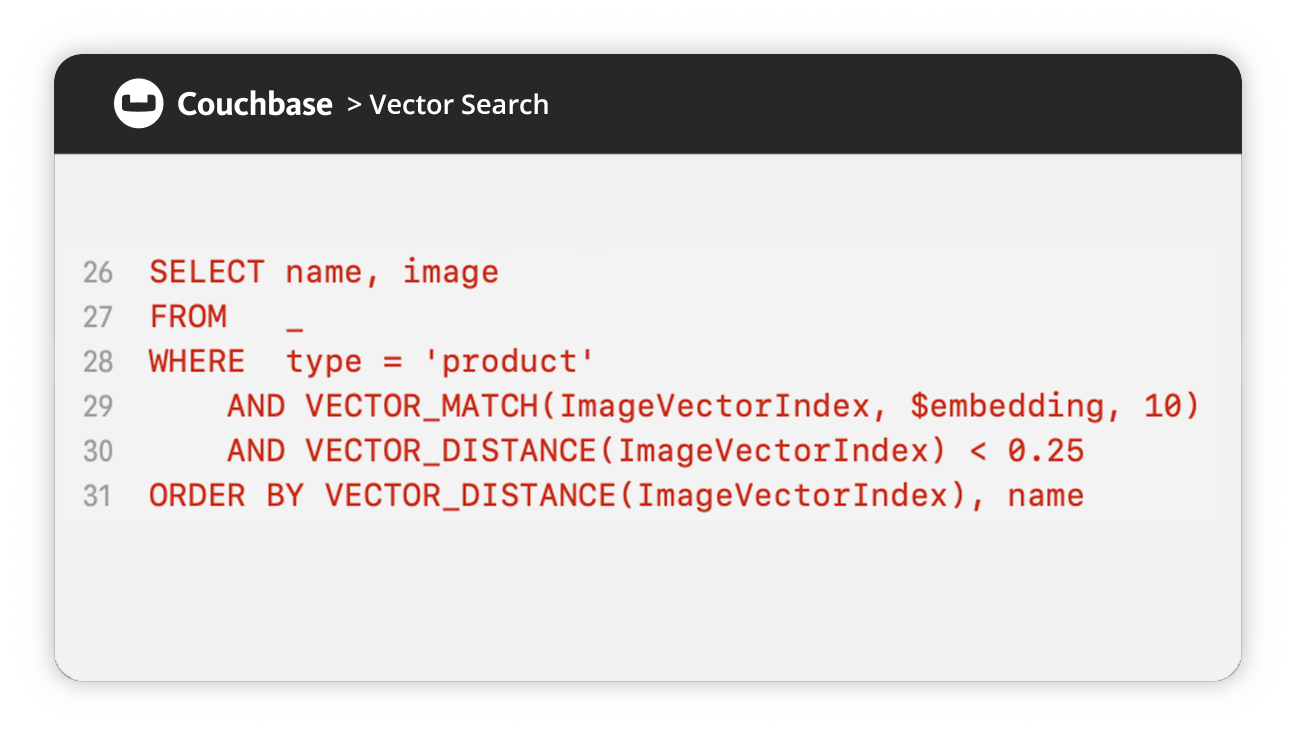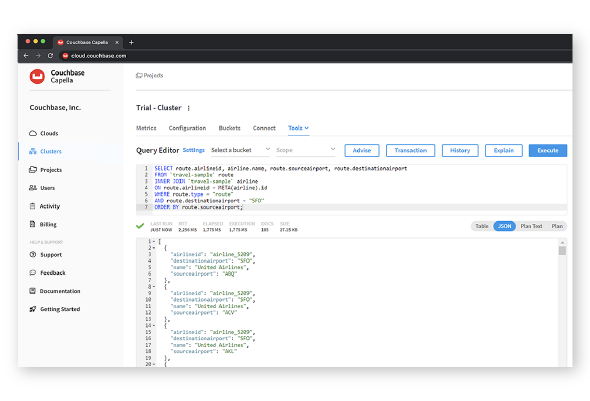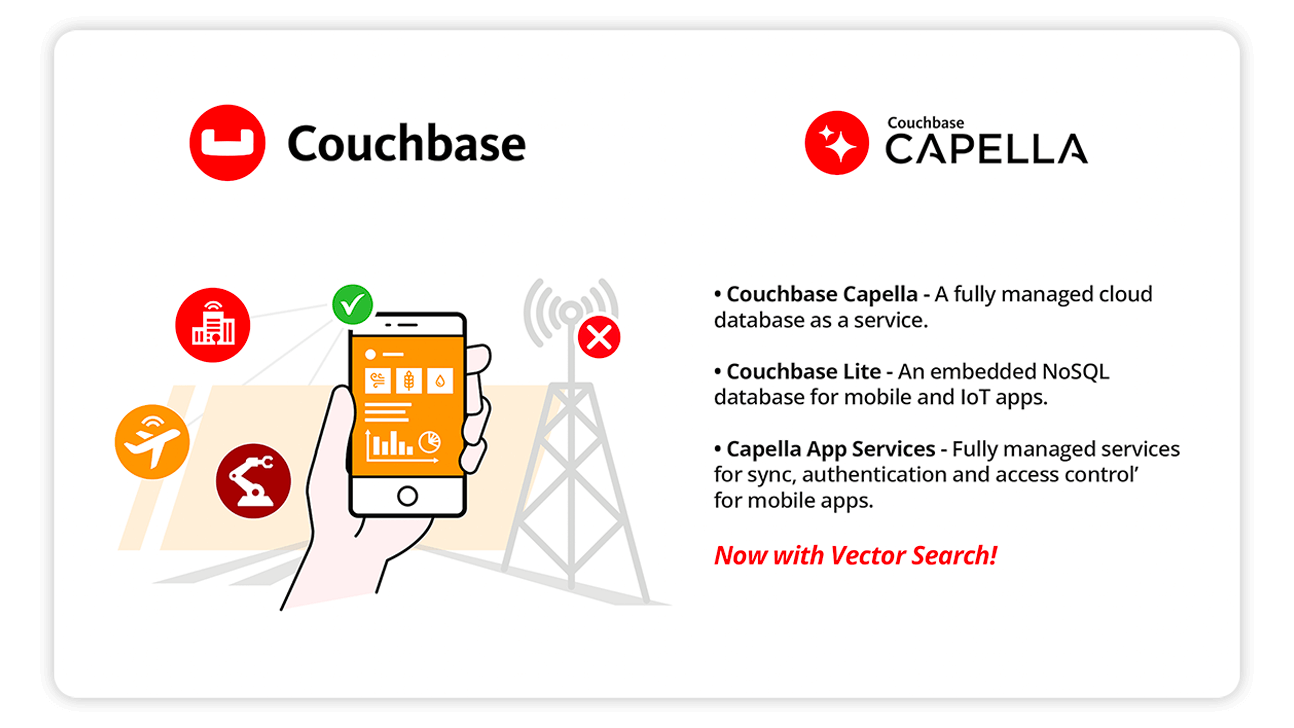Advantages of Couchbase for real-time analytics
Modern adaptive applications rely on operational and transactional data to create seamless experiences. But your apps can’t work in real time unless your analytics can instantly extract actionable insights from your changing data. Couchbase bridges this difficult data insight gap by converging operational data and real-time analytics in one platform that enables teams to build adaptive applications that drive real-time experiences, insights, and actions.
Benefits of JSON analytics with Capella columnar services
Fast
Combine real-time operational and computed data for adaptive applications.
Powerful
Accelerate analysis of JSON data with our new highly performant columnar engine.
Open
Broaden analysis with external data from NoSQL, RDBMS, streaming, and other sources.
Economical
Spend less with compute and data storage separation that allows for pay-as-you-go compute costs.
Capella columnar services key capabilities
With Capella, teams can build real-time insights into adaptive applications for better recommendations, hyper-personalization, and faster decision-making.
Operational and analytical data
Applications can incorporate both to deliver adaptive real-time experiences.
Lightning-fast analytics
Quickly processes documents into a columnar format.
JSON and other data source
Are rapidly ingested and converted to columnar format.
Compute and data separation
For huge datasets and pay-as-you-go calculations.
Fast SQL queries
Combines MPP engine and novel cost-based optimizer.
Add external data
Operational databases, streaming, data lakes, ML datasets.
AI-driven SQL and insights
Use Capella iQ to create SQL++.
Single UI and security
Control both operational and analytical data.
Easy access
Access insights via data API and BI tools.
Fast analysis and lower latency
Near-zero latency means teams can make informed decisions faster, reacting swiftly to market changes or operational needs. Adaptive applications can deliver new and innovative experiences to customers and employees.
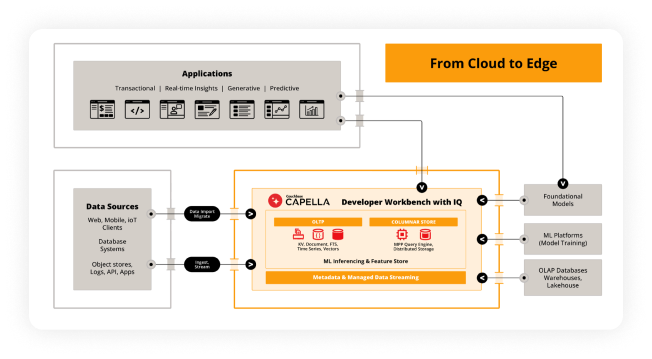
Powerful and economical
Separating compute and data storage improves cost-efficiency, scalability, and performance for applications that are consistently more powerful and cost less. This improves business innovation and application experience.
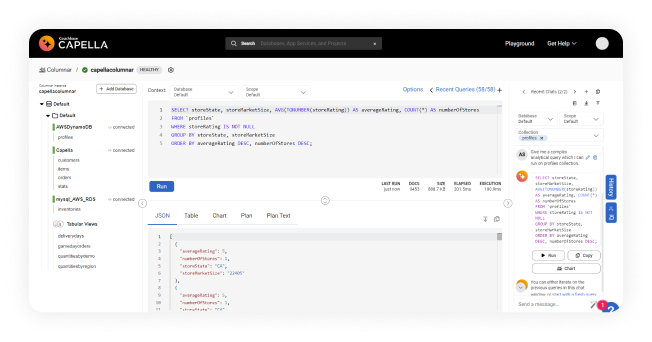
Easy and open
Capella columnar services give teams a new way to use external datasets and a variety of BI tools to gain insight from operational and analytical data. Sophisticated management and security design make it easier to administer your databases and users.
